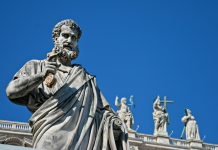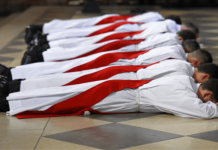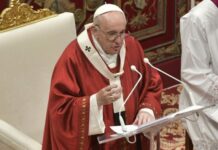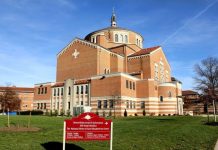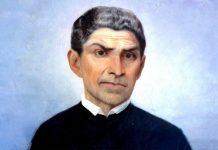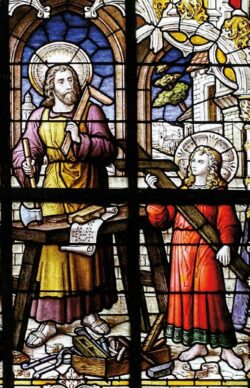St. Joseph united two extremes of the social scale. And though he was inferior to Jesus and Mary, he occupied first place before God and men.
Newsdesk (05/05/2024 14:47, Gaudium Press) Considering that “the Child grew and became strong, filled with wisdom, and the favour of God was upon Him” (Lk 2:40), and that the Blessed Virgin also progressed at each moment, filling Her spouse with the fragrance of her virtue, we may conclude that the infancy of the Son of God was a veritable story of three perfections that reached the summit to which they were called, as Dr. Plinio observes:
“In the house of Nazareth, there was a continual ascent in grace and holiness of the three sublime persons who dwelt there. If clocks existed at that time, we would say that with each tick-tock, Jesus, Mary and Joseph grew in grace and holiness before God and men. This continuous ascension was, in my opinion, the enchantment of God and man in that humble dwelling.”
However, these three apexes were unequal, mutually loving and harmoniously complementing each other. God had instituted a surprisingly inverse order between them, for “he who was head of the house in the human order was the least in the supernatural order; and the Child, who owed obedience to St. Joseph and the Blessed Virgin, was God.”
Two opposite ends of the temporal hierarchy
These exalted perfections created a sublime symphony in praise of hierarchy. St. Joseph himself united two extremes of the social scale.
On the one hand, Providence chose him as the crown prince of the most glorious ancestry on earth, for no imperial or royal lineage can compare to the family of Judah, from whom God-made-Man was born.
On the other hand, however, this head of the house of David was to be a manual labourer, to the point that years later, when the Nazarenes sought to discredit Our Lord, they would say to each other: “Is not this the carpenter’s son?” (Mt 13:55), implying that he was someone without social standing.
The Incarnate Word willed that His virginal father transmit, to Him, these two opposite poles of the temporal hierarchy.
Indeed, in Our Lord, human nature and divine nature are two infinitely distant realities, which are united in the same Person. In an analogous way, the condition of crown prince and that of carpenter coincide in Jesus.
This is why Dr. Plinio says that “the God-Man was also a King-Worker”. Thus, the Son of Mary, as the authentic “Prince of Peace” (Is 9:5), harmonized extreme social categories in Himself, in order to strengthen concord between the intermediate elements and establish the true “tranquillity of order” of which St Augustine speaks.
Living in the house of Nazareth
Our Lady, Queen of the Universe and a modest housewife, saw her Son behaving like a child in everything, playing with a charming vivacity, asking her for food and sitting on her knees to tell her a story.
However, she knew that this Child was the Second Person of the Blessed Trinity, and therefore inseparable from the other two Persons.
And Mary, while responding to His childish desires with the naturalness of a mother, scrutinized, with the discernment of the wisest of ladies, all the symbolic, theological and supernatural reasons behind those requests.
The smallest gesture of her Divine Son was so rich in nuance that one could study its scope indefinitely. The Queen of the Universe and the modest housewife knew how to scrutinize every gesture of her Divine Son, every glance or word of His.
However, this marvellous and transcendent intimacy between Jesus, Mary and Joseph was not perceived in all its grandeur by most people who knew them.
Because they were contemplative and humble, they lived in a kind of anonymity in order to fulfil the Father’s will to keep His Son hidden from the world until the age of thirty.
Only after many centuries did the conviction of the inestimable value of this period before God, the Angels and the Holy Church become increasingly established in the hearts of the faithful, for in it the sublime vocation of the Holy Family was made manifest.
In fact, it can be said that living together in the house of Nazareth was the most beautiful reflection of the most holy, ineffable and loving relationship of the Most Holy Trinity itself.
The earthly trinity
In the Trinity of Heaven, three divine and most perfect Persons are indissolubly united in the divine essence and are one by nature; in the Trinity on earth, three distinct Persons are united by the bond of the most intense love, fulfilling Jesus’ desire in the Gospel of St John: “The glory which Thou hast given me I have given to them, that they may be one, even as We are One” (Jn 17:22).
Bishop Sinibaldi explains it well: “In the Trinity of Heaven, the Father is the First Person, because He is the Principle, from whom the other two Persons proceed; the Son is the Second Person, because He proceeds from the Father’s intelligence; the Holy Spirit is the Third Person, because He proceeds from the will of the Father and the Son, as from a single principle.
In the earthly trinity, Joseph, head of the Holy Family, represents the Person of the Father; Jesus, the Incarnate Word, represents Himself; Mary, the Mother of Fair love, represents the Holy Spirit, who is uncreated and personal Love.
Although Joseph is inferior to Jesus and Mary, he occupies first place before God and men; for the Heavenly Father, entrusting to Joseph His two most beloved treasures – Jesus and Mary – transmitted to him His name and His authority!
Thus, the heavenly Trinity is reflected and manifested in the earthly Trinity; in Jesus and through Jesus earth is united to Heaven.”
Msgr. João Scognamiglio Clá Dias, EP
Text Extracted from the book Saint Joseph: Who Really Knows Him?…
Compiled by Roberta MacEwan



